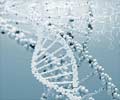A gene therapy protocol developed by the researchers has the potential to trigger the immune system in patients with leukaemia.
A gene therapy protocol developed by the researchers at the Moores Cancer Center at University of California, San Diego (UCSD) has the potential to trigger the immune system in patients with leukaemia.
The study, led by Thomas J. Kipps, M.D., Ph.D., found that patients with chronic lymphocytic leukemia (CLL) who were treated with the gene therapy protocol, began making antibodies that reacted against their own leukemia cells.For the study, the researchers inserted a gene with the potential to activate an immune response into six patients with CLL.
They found that several of the patients started making antibodies that reacted against their own leukemia cells. When tested in the lab, the antibodies also reacted with the leukemia cells of other patients with the disease.
“The patient’s own leukemia cells were modified outside of their body and given back as a vaccine. The result raises hope that it may be possible to activate a patient’s immune system against their own cancer,” Kipps said.
The patients were shown to make antibodies reactive with a leukemia-associated antigen, a protein made by leukemia cells that can stimulate the body's immune system to produce antibodies – called ROR1.
This antigen appears to be found only on the cell surface of the leukemia cells, but not on normal cells, and serves as a receptor that binds to a ligand called Wnt5a, which activates a pathway important for the survival of the leukemia cells.
Advertisement
He also found that since the ROR1 antigen is found only on leukemia cells, it could be developed as a very specific marker to monitor for the continued presence of leukemia cells after treatment or for identifying leukemia cells in patients with early disease, when the cancer otherwise might not be detected.
Advertisement
The study will be published in the online edition of the Proceedings of the National Academy of Science.
Source-ANI
KAV/L








